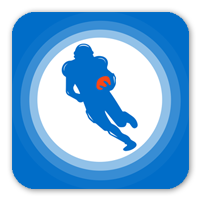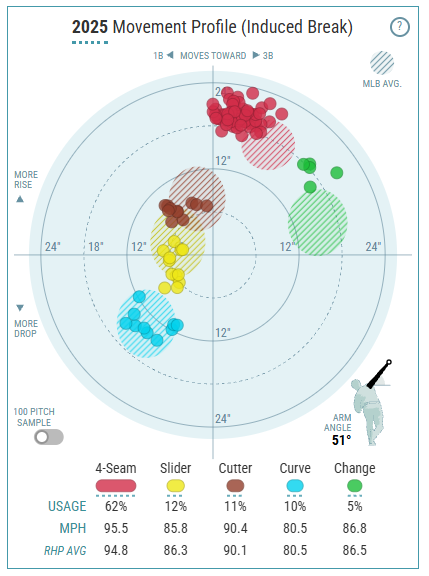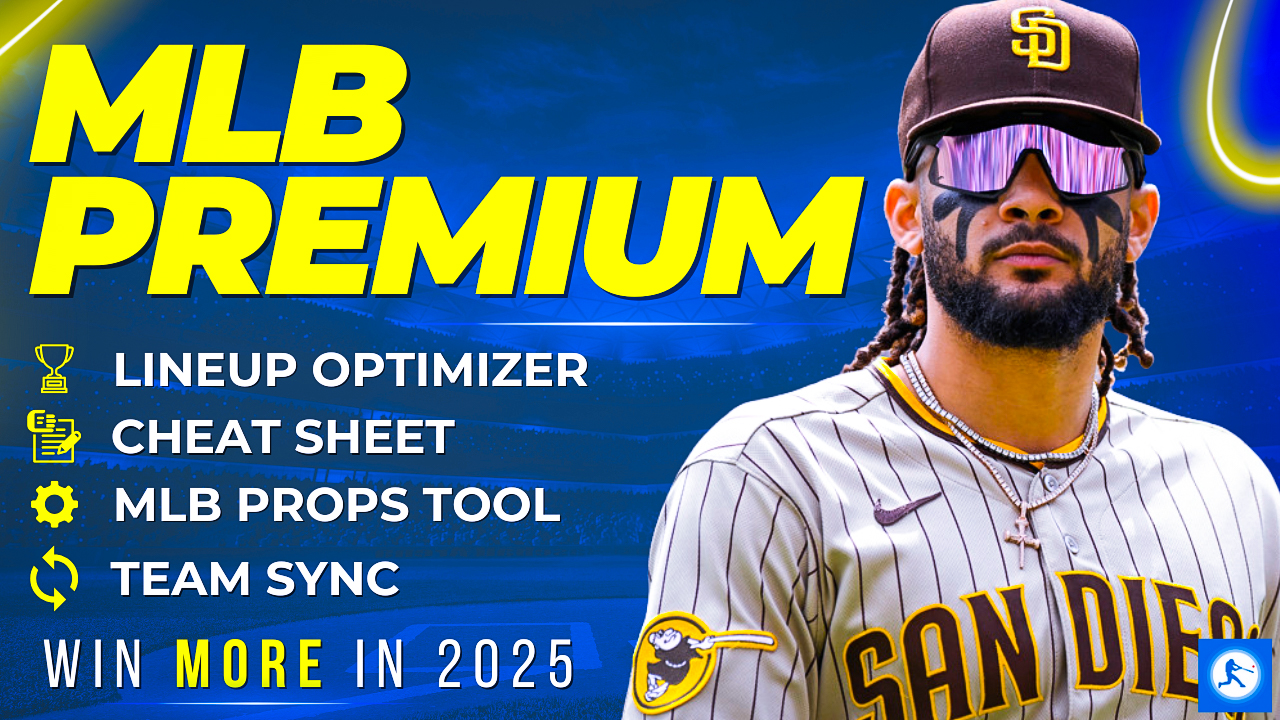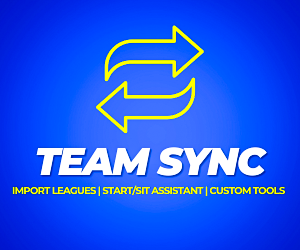Elliott looks at fantasy baseball sleeper pitchers with surprising starts recently. These SPs are potential breakout candidates could emerge as fantasy baseball waiver wire targets for Week 15 in 2025.
Welcome back to the "Are You For Real?" series as we dive into Week 15 of the 2025 fantasy baseball season. For those unfamiliar, this is a weekly column where we examine starting pitchers who had surprisingly strong starts over the past week and put them under the microscope to determine whether they're legitimate or just smoke and mirrors.
We had an extra-long Fourth of July weekend, and a ton of pitchers joined in the holiday fun with excellent starts. This week we'll be breaking down three interesting arms who are finally showing some signs of life over their past few starts. First, we'll break down Eury Perez's dominance against Minnesota. Then, we'll deep dive into Ryne Nelson's recent hot streak. We'll finish it off by looking at Trevor Rogers's resurgence in Baltimore.
Roster percentages are taken from Yahoo! and are accurate as of July.
Be sure to check all of our fantasy baseball lineup tools and resources:- Fantasy baseball trade analyzer
- BvP matchups data (Batter vs. Pitcher)
- PvB matchups data (Pitcher vs. Batter)
- Who should I start? Fantasy baseball comparisons
- Daily MLB starting lineups
- Fantasy baseball closer depth charts
- Fantasy Baseball live scoreboard
- Fantasy baseball injury reports
Eury Perez, Miami Marlins – 35% Rostered
2025 Stats (prior to this start): 16 IP, 6.19 ERA, 4.03 FIP, 5.6% K-BB%
07/03 vs. MIN: 6 IP, 1 H, 0 ER, 1 BB, 7 K
Perez came alive on Thursday for his best start of the season, blanking the Twinkies over six innings for his first victory since 2023. It’s been a long road back for Perez, who underwent Tommy John surgery in 2023 and went nearly two years between appearances in an MLB game. Still, Perez is just 22 years old and a former top prospect. Could this be the start of something special for Perez, or just a mirage?
Originally an international free agent signing out of the Dominican Republic in 2019, Perez shot up prospect boards after a dominant professional debut. In 2021, he posted a 1.96 ERA and 12.46 K/9 in 78 innings between A and A+ ball. Scouts fell in love with the big 6’8” frame and high velocity fastball. Perez works with a five-pitch mix consisting of a four-seam fastball, slider, curveball, changeup, and sinker.
Perez may have five pitches to choose from, but he really narrowed his repertoire in this start. He leaned heavily on the four-seamer and slider, throwing each pitch a combined 92% of the time. He threw four curveballs, two changeups, and zero sinkers. The changeup and sinker were already below 5.5% usage each, so it’s not outrageous to see a start where Perez eschews them in favor of his preferred pitches. It is a little surprising to see such low curveball usage, as Perez has had at least a 12.9% curveball usage rate in every start before this one.
It's not like the curveball has been a bad pitch for Perez, quite the opposite. Opponents are hitting just .176 off the pitch with a .176 SLG and .157 wOBA. The strikeouts are lacking with this pitch as Perez has just a 10.7% whiff rate, but he makes up for it by allowing just an 83.9 mph average exit velocity.
Batters aren’t able to square up the curve and hit it with any authority, at least so far. It’s a pitch he throws more often to lefties than righties, but the Twins started four left-handed or switch-hitting batters in this game. Perez was dominating the Twins so thoroughly that perhaps he simply didn’t need the curveball.
The curveball was never the pitch that had scouts and fans excited to watch Perez; that distinction goes to his four-seam fastball. A 98.1 mph offering, Perez is in the 95th percentile in fastball velocity in MLB. It looks even better when you limit the pool to just starting pitchers, as Perez is tied with Paul Skenes for the second-hardest fastball among starting pitchers (min. 20 IP), both just behind Hunter Greene. Velocity is just one component that makes Perez’s fastball nasty.
He also achieves 2,649 RPM and has additional vertical and horizontal movement with the pitch. Perez also piled up 13 of his 20 (20!) whiffs with the fastball in this game. Have a look at the fastball shape in his movement profile (four-seamer in red).
Not the craziest fastball shape I’ve ever seen, but this atypical profile makes the pitch especially hard to square up for opposing hitters. In fact, Perez has a 30-degree average launch angle and a 63% fly-ball rate against his four-seam fastball this season. Fly-balls are the least likely batted ball type to land for a hit, so this can be an incredibly effective approach to take, especially when pitching home games in cavernous Loan Depot Park.
While I do like the batted ball profile against Perez’s four-seamer, it must be acknowledged that he is getting lucky with the pitch, too. He has just a 5.9% HR/FB ratio with his fastball, compared to a 13.3% HR/FB ratio in 2023. He also has a .192 BABIP with the pitch, compared to a .308 BABIP in 2023, which is more in line with the league average.
Some numbers that give me pause are the .405 xSLG and the 90 mph average exit velocity. Perez gave up 1.48 HR/9 during his rookie campaign in 2023, but only has a 0.41 HR/9 and 3% HR/FB ratio in 2025. I’d anticipate more long balls surrendered by Perez over time.
The fastball can light up a radar gun, but another pitch that Perez relies heavily on is his slider. He threw the slider 31% of the time against Minnesota on Thursday and has thrown it 24.1% of the time this season. An 85.8 mph offering, Perez’s slider has below-average movement and average spin, although it does sort of have a unique shape and can be deceptive to hitters.
Overall, batters are hitting .227 with a .409 SLG and .334 wOBA off Perez’s slider, but he does have a .178 xBA, .287 xSLG, and .277 xwOBA with the pitch this season. He also has a 34.6% whiff rate, his best of any pitch. He got six whiffs with the pitch against Minnesota with a great 43% whiff rate, but it just paled in comparison to his fastball, which got 13 whiffs with a 52% whiff rate. Perez’s slider is his best breaking ball, and a pitch he should be able to find success using in tandem with his fastball.
This start was fantastic, but Perez’s overall performance since returning to the majors has been shaky. This start was the first time all season that he completed at least five innings in a start, and was only the second time that he allowed fewer than three earned runs. It was also the first time all season that Perez issued just one walk; he's issued multiple free passes in every other start.
Perez had solid control before undergoing Tommy John surgery, especially for a tall pitcher, so hopefully he can recapture that skill with time. He’s also been weirdly lucky in some regards, with a .233 BABIP against and a 3% HR/FB ratio. It somewhat balances out with a 61% LOB rate, but I’d expect these numbers to normalize over time as well.
Verdict:
Perez was a huge prospect just a few years ago and is still just 22 years old. This was the first sign of life we’ve seen from him all season since returning from Tommy John surgery, and I think fantasy managers should take the shot on Perez. Big upside pitchers don’t often emerge this late into the season, so when they do appear, they’re worth the stab. If Andrew Painter or Bubba Chandler were to be promoted, fantasy managers would be scrambling to add them. Well, Perez was just as big of a prospect two years ago, and his fastball still has plenty of life.
Perez can still take advantage of weak opponents with his four-seam and slider combo, though I wouldn’t expect him to have such high fastball and slider usage in a given start going forward. He will most likely mix in more curveballs and changeups; it just seems like the Twins couldn’t hit the fastball, so he peppered them with four-seamers.
Over the last 14 days, Minnesota is hitting .229 with a .299 wOBA and a 90 wRC+, so I don’t want to get too excited for Perez, but I do think he’s a must-add in standard leagues and deeper. The potential is just too great. His next start comes at Cincinnati, and I think one could start him there as Cincy has also been struggling over the last 14 days with a .305 wOBA and an 88 wRC+ collectively.
Ryne Nelson, Arizona Diamondbacks – 44% Rostered
2025 Stats (prior to this start): 67.1 IP, 3.61 ERA, 3.56 FIP, 14.1% K-BB%
07/05 vs. KC: 7 IP, 4 H, 1 ER, 0 BB, 5 K
Nelson was dealing on Saturday, firing seven innings of one-run ball while picking up his fifth win of the season. Nelson was tagged for seven runs against Cincinnati on 6/7, but since then, he’s been outstanding. Over his last five starts, Nelson has a 1.53 ERA, 2.92 FIP, and 18.5% K-BB%. Nelson has been on the fringes of fantasy viability over the past few seasons. Is Nelson finally turning a corner, or is this another fake-out?
Originally a second-round pick by Arizona back in 2019, Nelson wasn’t a big prospect on a national level, but he was viewed as a future starter in the desert. He’s primarily worked as a starter, though he’s made nine starts and 10 bullpen appearances this season. Nelson works with a five-pitch mix consisting of a four-seam fastball, slider, cutter, curveball, and changeup.
Nelson’s arsenal seems deep when listed out like that, but he relies heavily on one pitch, and that would be the four-seam fastball. Nelson has thrown it 62.1% of the time this season, and his fastball usage has remained high whether he’s pitching as a starter or reliever. In fact, he threw the four-seamer 69.8% of the time against Kansas City, and he’s thrown the four-seamer at least 57% of the time in every start this season and has averaged a 66.1% usage rate as a starter.
What makes the fastball so special for Nelson? He throws relatively hard at 95.5 mph and has been able to maintain that velocity as a starter. It’s not just the velocity that makes Nelson’s fastball so good, though; he has exceptional induced vertical break and has a very unique fastball shape. Have a look at his 2025 movement profile (four-seamer in red).
That atypical shape makes the pitch hard to square up, and opponents have really struggled against Nelson’s four-seamer this season. Batters are hitting just .182 off the pitch with a .302 SLG and .257 wOBA. Nelson also has a 20.8% whiff rate with the pitch, a strong rate for a fastball.
As good as the measurables on Nelson’s fastball are, I’m skeptical that he can sustain this performance over time. He’s been somewhat lucky with the fastball, especially given the quality of contact he’s allowed with the pitch. Opponents have a 90.4 mph average exit velocity and a 15-degree average launch angle off the pitch this season, yet Nelson only has a .228 BABIP against the fastball. His 28.5% line drive rate against the pitch is actually 2% higher than his career mark, making it curious how he’s been able to sustain such a low BABIP.
He had a .319 BABIP in 2023 and a .325 BABIP in 2024, so we should expect regression with this pitch. The expected stats think so, at least, as Nelson has a .248 xBA, .389 xSLG, and .315 xwOBA with the fastball this season. Nelson’s fastball is good, and definitely his best pitch, but there are signs he has overperformed with the pitch, and given how much he relies on it, fastball regression could turn Nelson’s ratios sideways.
When it comes to the secondary stuff, nothing really stands out for Nelson. He throws all three of his pitches, the slider, cutter, and curveball, between 9.6%-12% of the time, mixing them in when necessary. He uses the slider against right-handed hitters and the cutter against left-handed hitters, mixing in the curve every so often and the changeup almost exclusively to lefties.
His most-used secondary pitch has been the slider, which batters are hitting .222 against the pitch with a .370 SLG and .255 wOBA. The pitch stands out with its 0-degree average launch angle against and 69.6% ground-ball rate this season. Not bad results, but with just a 19.6% whiff rate and a 21.1% chase rate, Nelson’s slider lacks that strikeout oomph we like to see from a breaking ball. The whiff numbers on this pitch have been consistently low throughout Nelson’s career, so don’t expect a big turnaround anytime soon. He earned one of his five whiffs with the pitch in this start.
His best strikeout pitch this season has been the cutter, which has a 27.3% whiff rate and 25.9% chase rate. Nothing special, but solid for a cutter. Overall, opponents are hitting .208 with a .375 SLG and .285 wOBA off Nelson’s cutter this season. It’s sort of his best strikeout pitch by default, because these are some underwhelming numbers.
Unlike the slider, batters have made solid contact against Nelson’s cutter this season, with a 92.3 mph average exit velocity and a 19-degree average launch angle. He also has a .304 xBA, .578 xSLG, and .397 xwOBA with his cutter. This isn’t a pitch that Nelson can rely on consistently to get outs or strikeouts, and he’s coasted thanks to a .182 BABIP with the cutter this season, compared to a .324 career BABIP with the pitch.
So, the slider is an underwhelming strikeout pitch, and the cutter is vastly overperforming. Does Nelson have anything to go with his fastball? He did throw his curveball 12% of the time in this start, and he’s gotten some solid results with it thus far. Opponents are hitting .222 off Nelson’s curveball with a .370 SLG and .308 wOBA this season. However, like Nelson’s cutter, batters are making solid contact against the pitch, and it will likely experience regression.
Batters have a 91.3 mph average exit velocity and a 9-degree average launch angle against the pitch. Nelson also has a .280 xBA, .428 xSLG, and .354 xwOBA against his curveball this season. His 23.8% whiff rate is okay for a curveball, and he has a solid 32.9% chase rate with the pitch. He throws the curveball to lefties more often, but he does mix it into righties occasionally. This could be a solid pitch for him, but I don’t think the curveball can become that go-to breaking ball that Nelson is missing.
Verdict:
A dominant fastball has allowed Nelson to go on a hot run over the past month, but that hot streak has been buoyed by some good fortune. Nelson is definitely overperforming with a .230 BABIP and an 8.5% HR/FB ratio on the year. His 95.5 mph fastball has some excellent movement and can tie hitters in knots, but his secondary stuff leaves something to be desired. Nelson doesn’t really have a go-to secondary offering; he mixes in his slider, cutter, and curveball about equally.
Each pitch has its purpose, but none stand out as dominant, and none are good enough to be a true complement to his four-seamer. Nelson can be viable as a streamer, especially against weak opponents like Kansas City, but I do not think he is good enough to be a rotation mainstay, and I don’t think his recent hot streak is much more than a good month. His next start comes Friday against the Angels, and I think he’s usable there as the Angels' 26% K rate is the second-highest by any team against right-handed pitching this season.
Trevor Rogers, Baltimore Orioles – 32% Rostered
2025 Stats (prior to this start): 22 IP, 2.05 ERA, 2.99 FIP, 14% K-BB%
07/06 @ ATL: 6.2 IP, 4 H, 0 ER, 2 BB, 6 K
Rogers continued his hot streak on Sunday, blanking the Braves over six and two-thirds innings while picking up his second victory of the season. Rogers has been excellent in five starts this season, posting a 1.57 ERA and 2.81 FIP over 28.2 innings. This isn’t the first time we’ve seen flashes of brilliance from Rogers, but is there any staying power with this southpaw?
Originally a first-round pick by the Marlins back in 2017, Rogers was one of several Miami arms that debuted in the early 2020s and found success. Rogers had a breakout campaign in 2021, posting a 2.64 ERA and 2.55 FIP along with a 10.62 K/9 in 25 starts that season. I fell hook, line, and sinker for this fish after that display, but Rogers has struggled with injuries and has never been able to recapture that past success, until now. Rogers works with a five-pitch mix consisting of a four-seam fastball, changeup, sinker, slider, and sweeper.
Rogers' most-used pitch this season has been the four-seamer, but we’ll start with the pitch that made him famous, which is that changeup. Rogers was a changeup fiend during his 2021 breakout campaign, using the pitch 27.4% of the time to great success. It was his bread-and-butter pitch and the reason he had such a gaudy strikeout rate. In some respects, the changeup is still a great pitch. Batters are hitting .167 against Rogers’ changeup, along with a .233 SLG and .190 wOBA.
Those are great results, but some of the underlying numbers do not support this performance. Rogers only has a 17.2% whiff rate with his changeup, nearly half of what it was back in 2021. He also has a blistering 94.6 mph average exit velocity against the pitch, along with a .293 xBA, .430 xSLG, and .323 xwOBA. A monster 75% ground-ball rate has helped Rogers limit the damage against this pitch, but there’s no way his .179 BABIP on the changeup holds, especially considering he has a .296 career BABIP with the pitch.
I do think there’s room for growth in terms of strikeouts with the changeup because Rogers has posted a double-digit swinging strike rate with the pitch in every season except 2025, and it’s been a reliable source of whiffs for him throughout his ups and downs. He’ll never reach his 2021 heights when he had a 28.5% K rate, but he could sustain something around 20-22% with this arsenal.
The changeup had been his best strikeout pitch in the past, but his slider and sweeper have done a lot of the heavy lifting in that department this season. Batters are hitting .143 off the slider with a .143 SLG and .256 wOBA. He also has a 35.3% whiff rate with the pitch. On the sweeper, opponents have yet to get a hit with zeroes across the board and a .020 xBA, along with an incredible 56.3% whiff rate. He’s only thrown 52 sliders and 29 sweepers, so this is a tiny sample size, but Rogers has some great numbers on these pitches. The sweeper has some awe-inspiring movement numbers, with movement that deviates from league average and gives the pitch a unique shape. Here’s an example from this start.
— Elliott Baas (@ElliottBaasBB) July 7, 2025
Looks like an out pitch there, and the slider has become a great tool for him against left-handed hitters, while he uses the changeup primarily against righties.
The secondary stuff looks solid on Rogers. Not extraordinary, but solid major league caliber stuff that should allow Rogers to stick around in an MLB rotation. The biggest drawback to Rogers’s profile is his lack of velocity. He only averages 93.3 mph on the gun, which is about a full mph lower than his peak in the early 2020s. The good news is that batters have really struggled against Rogers’s four-seamer this season, hitting just .167 with a .250 SLG and .207 wOBA.
Batters are hitting the ball relatively hard with a 90.1 mph average exit velocity, but Rogers keeps things in check with a 26-degree average launch angle against and a 60.9% fly-ball rate against. Fly-balls are the least likely batted ball type to land for a hit, so a fly-ball heavy approach can be fruitful for a pitcher, if risky. For Rogers, I’d anticipate a rise on his current 0.31 HR/9, which is supported by an unsustainable 3.6% HR/FB ratio. He only has a career 0.88 HR/9, so long balls aren’t a huge problem for Rogers, but this is an area where I’d expect regression.
Speaking of regression, Rogers is the perfect candidate for it. He currently has a .211 BABIP and 85.4% LOB rate against, both of which will normalize towards his career marks of .313 and 71%. He’s overperforming with every pitch sans the slider and sweeper, and while I think his stuff is major league caliber, Rogers is not a sub-2.00 ERA pitcher. Heck, he might struggle to be a sub-4.00 ERA pitcher. That doesn’t mean there’s no value here, but many of his best starts have already happened.
Verdict:
Those of us who remember the 2021 version of Rogers might’ve gotten a little excited, seeing him perform so well this season. Unfortunately, his changeup doesn’t get the whiffs it once did, and he’ll have a hard time recapturing that success over a long period of time. Increased reliance on his slider and sweeper may be a good thing, as both pitches have performed well this season and could earn him some extra strikeouts.
He rounds it out with a below-average fastball that does a good job generating fly-balls, but not much else. The stuff is good enough to keep him in a big league rotation, but he’s nothing more than a low-upside streamer for fantasy purposes. He doesn’t have big strikeout potential and pitches for a bad team. His next start is a revenge game against Miami at home, and I’d use him there.
More Fantasy Baseball Advice
Download Our Free News & Alerts Mobile App
Like what you see? Download our updated fantasy baseball app for iPhone and Android with 24x7 player news, injury alerts, sleepers, prospects & more. All free!






 RADIO
RADIO


























